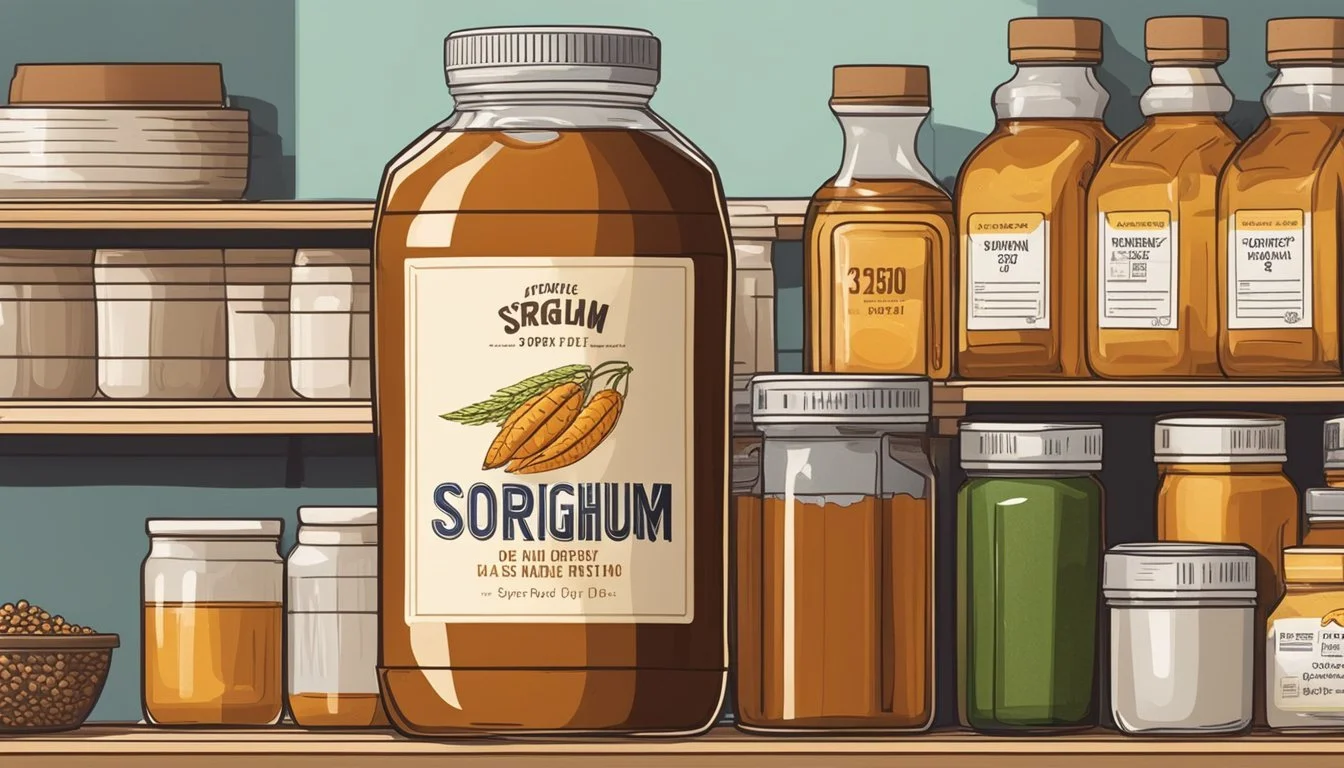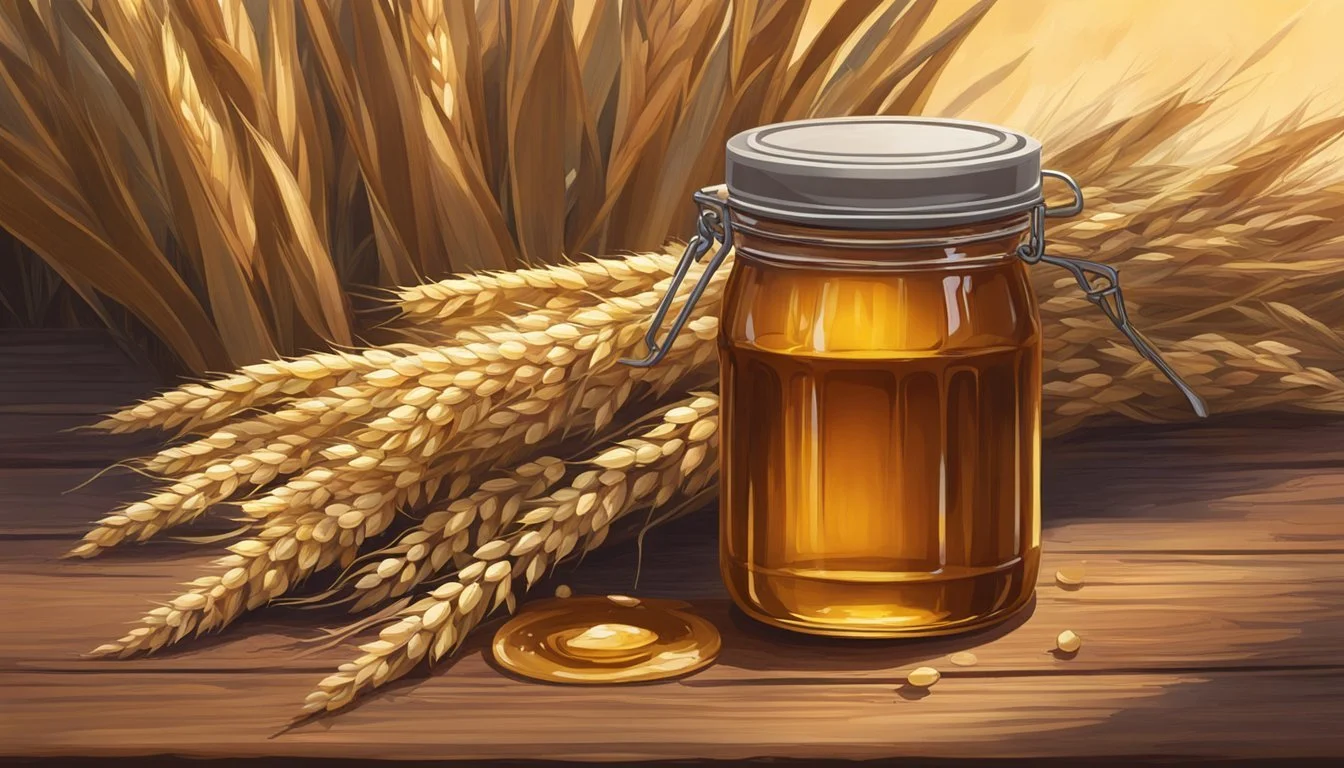How Long Does Sorghum Syrup Last?
Shelf Life and Storage Tips
Sorghum syrup (how long does sorghum syrup last?), a natural sweetener derived from the juice of the sorghum plant, has a rich history and a unique, robust flavor. Its longevity is comparable to other natural sweeteners, such as honey, when it comes to shelf life. The key to maximizing its longevity lies in the storage method. When stored properly in an airtight container on the shelf, sorghum syrup can last indefinitely, preserving its quality and flavor.
Unlike other food items that may require refrigeration after opening to extend their shelf life, sorghum syrup maintains its stability at room temperature. This resistance to spoiling is due to its high sugar concentration, which acts as a natural preservative. As a result, there's generally no need to refrigerate sorghum syrup, although doing so will not harm the product. It should be noted, however, that temperature fluctuations and exposure to moisture can affect its shelf life.
To ensure longevity, sorghum syrup should be kept in a cool, dry place away from direct sunlight. Sealing it tightly after each use will help prevent moisture and any potential contaminants from entering the container. These simple steps will help maintain the syrup's quality and extend its edible period, allowing users to enjoy its distinctive sweetness over time without the worry of rapid spoilage.
Understanding Sorghum Syrup
Sorghum syrup is a natural sweetener derived from the sorghum plant, a type of grain native to Africa but also cultivated in the United States, especially in southern states like Kentucky, Tennessee, Georgia, Texas, and Kansas. This ancient grain has been used for centuries, valued for its sweetness and flavor.
The process of making sorghum syrup begins at a sorghum mill. At places like the Muddy Pond Sorghum Mill, the stalks of sweet sorghum are crushed to extract their juice. The juice is then cooked down, often over wood fires, until it thickens into syrup. The result is a rich, amber-hued syrup known for its unique flavor profile, distinct from that of molasses, which comes from sugar cane.
As a sweetener, sorghum syrup is favored for its depth of flavor. It provides more than just sweetness; it brings a complexity that enhances a variety of dishes. In the culinary traditions of the South, it often finds its way onto breakfast tables, drizzled over hot biscuits or pancakes.
Sorghum farmers maintain a traditional approach, preserving the heritage and authentic methods of sorghum syrup production. It is seen not just as a crop but as a cultural treasure, reflecting the history and community spirit of the regions where it thrives.
Shelf Life
Unopened: Indefinitely on the shelf in an airtight container
Opened: Quality remains best when stored properly
Proper Storage
Cool, dry place
Airtight container
Given its stability, sorghum syrup does not require refrigeration, though it should be kept away from moisture and pests to preserve its quality. Its longevity and natural sweetness make it a staple for those seeking a robust sweetener with deep historical roots.
Nutritional Profile
Sorghum syrup is a natural sweetener low in fat and high in energy, providing a considerable amount of calories primarily from carbohydrates. Here's a closer look at its nutritional content, based on a tablespoon serving:
Calories: Around 316 kcal
Fat: Approximately 3 grams
Carbohydrates: 69 grams
Sugars: 2.5 grams
Dietary Fiber: 7.5 grams
Protein: Roughly 10 grams
Mineral content per tablespoon of sorghum syrup includes:
Calcium: Contributes to about 3% of the daily value (DV)
Iron: Provides nearly 4% of DV, supporting blood health
Potassium: About 6% of DV, essential for heart and muscle function
Magnesium: Accounts for 5% of DV, important for many biochemical reactions
Phosphorus: Vital for the formation of bones and teeth
The syrup also provides a modest amount of B vitamins, such as riboflavin, which is essential for cellular function and metabolism.
While sorghum syrup does contain some antioxidants, it should not be considered a significant source of these compounds in comparison to fruits, vegetables, and other plant-based foods.
Given its nutrient profile, sorghum syrup can contribute to nutritional intake, but it should be consumed in moderation given its high sugar content.
Culinary Uses
Sorghum syrup, a versatile natural sweetener, is esteemed for its robust flavor and adaptability in various culinary applications, from sweetening beverages to complementing savory dishes.
Baking Applications
In baking, sorghum molasses serves as a natural sweetener and flavor enhancer. Its rich, complex taste adds depth to traditional baked goods such as cornbread, cakes, biscuits, and cookies. When using sorghum syrup in baking, it is crucial to adjust the quantities, as its sweetness varies from other sweeteners.
Substitute for Molasses: Sorghum can replace molasses at a 1:1 ratio, imparting a similar dark, rich flavor to recipes.
Gluten-Free Baking: Sorghum flour (how long does sorghum flour last?) is often used in gluten-free recipes, enhancing the texture and taste of the final product.
Healthier Option: Opt for sorghum syrup to introduce a more wholesome sweetness compared to refined sugars.
Cooking and Recipes
Beyond baking, sorghum syrup enriches the flavors of various dishes. It contributes a unique sweetness to soups, stews, and marinades and complements the umami of savory recipes.
Stirring into Cereals: A spoonful of sorghum syrup can transform a simple bowl of cereal into a delightful, sweetened treat.
Salad Dressings: It can add a subtle sweetness to vinaigrettes and salad dressings.
Marinades: When combined with spices, it creates rich marinades that caramelize well during cooking.
Other Uses in Food Preparation
Sorghum's culinary uses extend into creative snacking and beverage sweetening. Its syrup is not just for traditional recipes but can amplify the taste and nutritional value of snacks and drinks.
Sweetening Beverages: Add sorghum syrup to tea, coffee, or lemonade for a natural sweetness boost.
Ancient Grain Snacks: Popped sorghum, an alternative to popcorn, offers a nutritious and flavorful snack option with fewer hulls.
Granola and Bars: Incorporate sorghum syrup in granola or snack bar recipes for binding ingredients together and ensuring a crispy texture.
Sorghum syrup, with its sweet, complex flavor, enhances a wide spectrum of recipes, providing a versatile and wholesome alternative to other sweeteners.
Storage Guidelines
When it comes to storing sorghum syrup, understanding shelf life, recognizing spoilage signs, and adhering to proper preservation methods are essential to maintain its quality and longevity.
Shelf Life Determinants
Temperature and container integrity are the two primary factors influencing the shelf life of sorghum syrup. Sweet sorghum syrup, a natural liquid sweetener akin to molasses, has an impressive shelf life due in part to its high sugar content, which inhibits bacterial growth. It can remain stable indefinitely if kept in an airtight container, away from direct sunlight and at a consistent temperature in the pantry. Refrigeration is not necessary and does not extend its shelf life.
Spoilage Signs
Sweet sorghum syrup is resistant to spoilage; however, it's not immune. Indicators that the syrup may have gone bad include:
Mold growth: Any visible mold means the syrup should be discarded.
Off-odors: A change in smell can signify spoilage.
Change in color: If the color darkens significantly, this may indicate deterioration.
Texture changes: The presence of crystals or thickening beyond the original consistency might suggest spoilage.
Proper Sorghum Syrup Preservation
Preserving sorghum syrup's quality involves a few key practices:
Airtight Storage: Store it in an airtight container to guard against moisture and contaminants.
Stable Conditions: Keep the syrup in a cool, dry place — a pantry or cabinet away from heat sources is ideal.
Avoiding Contamination: Use clean utensils to prevent introducing bacteria.
Gentle Warming: If crystallization occurs, placing the container in hot water can gently return the syrup to a pourable consistency. Avoid using a microwave, as uneven heating can degrade the syrup.
Health and Dietary Considerations
When considering the inclusion of sorghum syrup in a diet, one must consider its nutritional value. Sorghum syrup serves as a natural sweetener and is a source of certain minerals such as iron, magnesium, potassium, and phosphorus. Each of these contributes to various bodily functions, potentially offering health benefits when consumed in moderation.
Iron is crucial for oxygen transport in the blood.
Magnesium plays a role in over 300 enzymatic reactions, including energy production.
Potassium is essential for muscle function and maintaining electrolyte balance.
Phosphorus contributes to the formation of bones and teeth and helps manage how the body stores and uses energy.
As a sweetener, sorghum syrup is high in calories, similar to other natural sweeteners. Individuals must account for these calories when managing their dietary intake, especially for those monitoring their caloric consumption for weight management or diabetes. However, being a natural sweetener, it can sometimes be a preferable alternative to refined sugars for those seeking less processed options.
For those with particular dietary restrictions such as a gluten-free diet, sorghum syrup is suitable as it is naturally devoid of gluten. This makes it a viable option for individuals with celiac disease or gluten sensitivity.
In moderation, sorghum syrup can fit into a balanced diet. However, as with any sweetener, it should be consumed responsibly, taking into account its caloric content and lack of significant amounts of vitamins. Individuals with diabetes or other health conditions should consult healthcare professionals to assess its role in their specific dietary needs.
Sorghum Varieties and Cultivation
Sorghum is a versatile and resilient crop that plays a critical role in agriculture worldwide. It is distinguished not only by its adaptability and drought tolerance but also by the breadth of its varieties, each suited to different uses and climatic conditions.
Sorghum in Agriculture
Sorghum (Sorghum bicolor) is an ancient grain that originated in Africa and has since spread throughout the globe due to its robust nature. It is primarily cultivated for its grains, which serve as a staple food in many parts of the world, and its stalks, which are used for making syrup, also known as sorghum molasses, particularly in the Southern United States. The plant is highly prized for its drought tolerance, making it a reliable crop even in arid and semi-arid regions.
The two main types of sorghum are:
Grain Sorghum: Cultivated for its grain, which is used for food products, animal feed, and more recently, for ethanol production.
Sweet Sorghum: Grown for its stalk, which is processed for syrup, and has the dual purpose of serving as forage for livestock.
Cultivation practices for sorghum typically involve direct seeding into the soil, with seeds planted about ¼ inch deep and spaced 8-12 inches apart. The crop thrives in well-draining soil and requires full sun exposure, and planting usually occurs when temperatures are consistently warm, often in late spring or early summer.
Regional Sorghum Production
Sorghum farming is a significant agricultural activity in several regions across the globe. While it continues to be a cornerstone of subsistence agriculture in parts of Africa, sorghum production has also become integral to the agricultural landscapes of the United States, particularly in states like Kansas, Texas, and to a lesser extent, Kentucky, Tennessee, and Georgia.
In the United States, two types of sorghum are specifically noteworthy:
Southern Sorghum: Sweet sorghum varieties are more prevalent in the Southern states, where they are grown for syrup production using sorghum mills.
Midwestern Sorghum: In states such as Kansas and Texas, grain sorghum is dominant, catering to the needs of grain and ethanol markets, as well as serving as forage for livestock.
In both cases, the crop's resilience to dry conditions continues to drive its popularity, as farmers value the ability to yield a productive harvest even when irrigation is limited or rainfall is inconsistent. This feature, along with the plant's diverse applications, ensures sorghum's place as a staple in sustainable agricultural systems.
Environmental and Economic Aspects
Sorghum, particularly sweet sorghum, is lauded for its drought tolerance, making it a resilient crop for areas with water scarcity. Its hardiness under challenging climatic conditions translates into economic stability for the sorghum farmer. Cultivating sorghum can provide a consistent source of income in environments where other crops might fail, underscoring its economic impact.
Being a versatile plant, sorghum is used not only for syrups and foods but also as a biofuel. Sweet sorghum can be converted into bioethanol, a renewable fuel source, contributing to energy security and offering a sustainable alternative to fossil fuels. This conversion process additionally can align with sustainability practices, as the crop's efficient carbon and water footprint sits well with environmentally conscious objectives.
Financially, sorghum's adaptability leads to a variety of marketable products, from grain for livestock feed to the nutritious syrup enjoyed by consumers. This versatility opens multiple streams of revenue, enhancing the economic resilience of farmers and related industries. Furthermore, sorghum’s ability to grow in marginal soils can turn underutilized land into productive acreage, elevating its economic importance.
Aspect Impact on Sorghum Drought Tolerance Reduces risk of crop failure Versatility Diversifies products & revenue streams Fuel Production Adds value to crop via bioethanol Sustainability Strengthens eco-friendly agriculture practices
In summary, the agricultural practice of cultivating sorghum addresses both environmental concerns and economic viability, making it a pivotal player in sustainable agriculture and a strong ally to farmers worldwide.
Substituting Sorghum in Recipes
When a recipe calls for sorghum syrup and it’s not available, several alternatives can offer comparable sweetness and flavor profile. The key is to use natural sweeteners that mimic sorghum’s unique traits.
Maple Syrup: A popular liquid sweetener, maple syrup can replace sorghum syrup at a one-to-one ratio. Like sorghum, it brings a rich, deep flavor, especially in baked goods.
Honey: Although slightly thicker, honey is another natural sweetener that can substitute for sorghum syrup. It's advisable to use a bit less honey than sorghum, due to its pronounced sweetness.
Molasses: This liquid sweetener has a robust flavor, much like sorghum. Use molasses in equal amounts but expect a darker color and a stronger taste in the final product.
For those watching their refined sugar intake, these substitutes offer a more natural option compared to white sugar. While liquid sweeteners can usually be swapped on a one-to-one basis, when substituting granular sweeteners, it may be necessary to adjust the recipe's liquids accordingly.
Here is a simple table for substituting sorghum syrup:
Substitute Ratio Notes Maple Syrup 1:1 Similar consistency, adds a different but rich taste Honey Start with 3/4:1 Sweeter than sorghum, so use less Molasses 1:1 Stronger flavor, may darken the dish
It should be noted that the distinct taste of sweet sorghum syrup is partly due to its source, the sorghum plant, and while substitutes may provide similar sweetness, they will impart their own unique flavor characteristics to dishes.
Conclusion
When stored properly in a cool, dark place, sorghum syrup has an impressive shelf life. Kept in an airtight container, one can expect sorghum syrup to retain its quality for up to two years. Refrigeration is not necessary and, in some cases, not recommended as it can cause crystallization.
After opening, it should be used within a reasonable time frame, but due to its high sugar content, it doesn't spoil easily. Users should pay attention to changes in color, texture, or smell as indicators of spoilage.
Storage Tips for Sorghum Syrup:
Store in a cool, dark place, such as a pantry
Keep in an airtight container
Avoid refrigeration to prevent crystallization
One should remember that, while sorghum syrup is resilient, careful storage is key to maximize its shelf life. Users who follow these guidelines can enjoy their sorghum syrup without frequent concern for spoilage.










